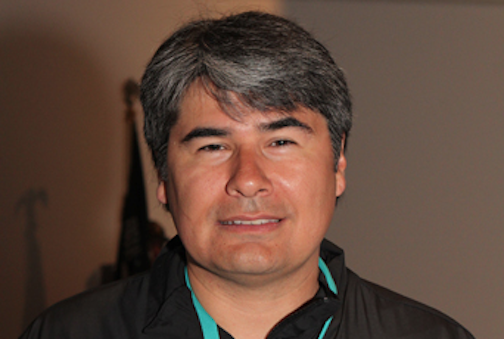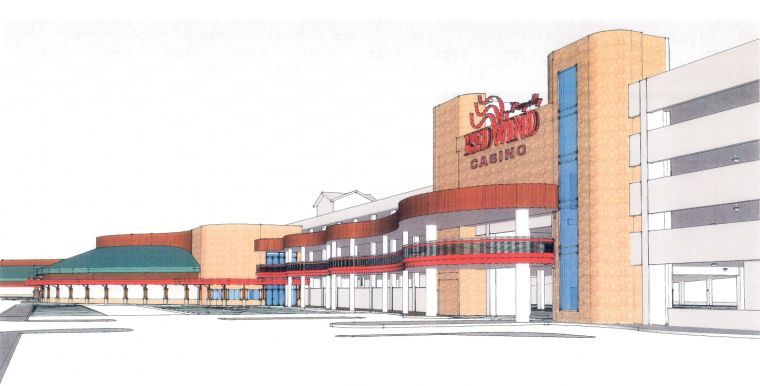By Terri Hansen, Indian Country Today Media Network
A visually stunning Pendleton blanket with a distinctive, contrast-driven look subtly blends black and white to create rich gray tones that appear both heathered and color-blocked throughout the design is the fruit of Nike’s collaboration with Pendleton Woolen Mills.
The Nike N7 Blanket is part of the new Nike N7 Holiday 2013 Collection. A portion of the proceeds from its sales will benefit the American Indian College Fund, the nation’s largest private provider of scholarships for American Indian students.

When sketching out the initial artwork for the blanket, Nike N7 Collection Designer Derek Roberts looked to traditional Native American dress for inspiration, specifically how patterns work together to create a garment. He started at the bottom of the blanket, with a smaller pattern of arrows that repeats and grows in scale towards the center and is a mirror-image pattern from top to bottom. Roberts also took visual inspiration from Nike Flyknit, with the PWM Nike N7 Blanket’s woven wool fabric mixing to create unique color tones and shapes. Adding a unique twist to the traditional Pendleton Woolen Mills blanket designs that often feature a multitude of colors, Roberts made the decision to use only black and white.
“The goal with the artwork for the Nike N7 Pendleton Woolen Mills (PWM) Blanket was to bridge the gap between heritage-based, traditional style and current trends in a way that would inspire the entire Nike N7 Holiday 2013 collection,” Roberts told Indian Country Today Media Network.
The center of the blanket design prominently features the Nike N7 mark—three arrows pointing back to signify past generations, three arrows pointing forward to signify future generations, and arrows in the center to represent the current generation. The arrows sometimes appearing as triangles or other shapes, convey both movement and balance. The blanket is reversible for a positive/negative visual effect, with a black base on one side and white on the other, and includes the iconic blue Pendleton Woolen Mills badge with black and cream Nike N7 label. Soft wool is featured on the white side.
The PMW Nike N7 Blanket retails for $298 USD, with a portion of the proceeds to benefit the American Indian College Fund, which has been “Educating the Mind and Spirit” of Native people for nearly 25 years, providing an average of 6,000 scholarships annually. The College Fund also supports the nation’s 34 accredited tribal colleges and universities located on or near Indian reservations.
Four other styles in the Nike N7 Holiday 2013 Collection were inspired by the Nike N7 Pendleton Woolen Mills blanket artwork.

The PWM N7 Windrunner Jacket – Elements from the blanket design inspire the decorative sleeves on the iconic Nike Windrunner Jacket for a neutral yet strong and modern look that is rooted in traditional values. Embroidery stitching is featured on the sleeves and the N7 logo is both inside the jacket and on the chest. The jacket also features reflectivity for visibility. Suggested Retail Price: copy00 USD.
The PWM N7 Graphic Tee – On the men’s and women’s Nike N7 Graphic Tee, the scale of the blanket pattern is exaggerated and placed on the shoulder of the men’s and waist of the women’s tee for a dynamic and distinct look. The white-on-black graphic is comprised of small lines that relate back to the actual fibers of the blanket to create a fade effect. Both tees also include decorative stitching. Suggested Retail Price: $34 USD.
The PWM N7 Air Force 1 High & PWM N7 Roshe Run – For the men’s Nike N7 Air Force One and women’s Nike N7 Roshe Run, a lighter wool fabric was created by Pendleton Woolen Mills that features a representation of the pattern on the bottom of the blanket. The neutral patterned fabric creates contrast with the solid black upper of both styles. Suggested Retail Price for the PWM N7 Air Force I High: copy35 USD. Suggested Retail Price for the PWM N7 Roshe Run: $85 USD. The Nike PWM N7 Blanket is available at Nike.com and Pendleton-USA.com.
The PWM N7 Windrunner Jacket, PWM N7 Air Force 1 High and PWM N7 Roshe Run, as well as additional styles from the Nike N7 Holiday 2013 Collection, will be available beginning October 26 at Nike.com, Nike and Foot Locker locations across the United States and Canada. Mercer will also feature the Nike N7 Pendleton Woolen Mill fabric for a limited time as part of its bespoke offerings.
The Nike N7 collection of apparel and footwear supports the N7 Fund and its mission to inspire and enable two million Native American and Aboriginal youth in North American to participate in sport and physical activity. The N7 Collection highlights the N7 philosophy—In every deliberation we must consider the impact of our decisions on the next seven generations—and also embodies Nike’s Considered Design ethos to create performance product engineered for superior athletic performance and lower environmental impact.
Since the Nike N7 collection launched in 2009, more than $2 million has been raised for Native American and Aboriginal youth sport programs through the N7 Fund. Nike N7 and the N7 Fund are aligned with Designed to Move, a growing community of public, private and civil sector organizations (including Nike) dedicated to ending the growing epidemic of physical inactivity. For Nike N7 Collection retail locations and for more information about Nike N7, visit NikeN7.com, or follow Nike N7 on Facebook and @NikeN7.
Pendleton is recognized worldwide as a symbol of American heritage, authenticity and craftsmanship. With six generation of family ownership since 1863, the company celebrates 150 years of weaving fabric in the Pacific Northwest in 2013. Inspired by its heritage, the company designs and produces apparel for men and women, blankets, home décor and gifts. Pendleton is available through select retailers in the U.S., Canada, Europe, and Asia; Pendleton stores; company catalogs and direct-to-consumer channels including the Pendleton website, http://www.pendleton-usa.com.
Read more at http://indiancountrytodaymedianetwork.com/2013/10/26/nike-n7-holiday-2013-collection-where-innovation-meets-tradition-151944














